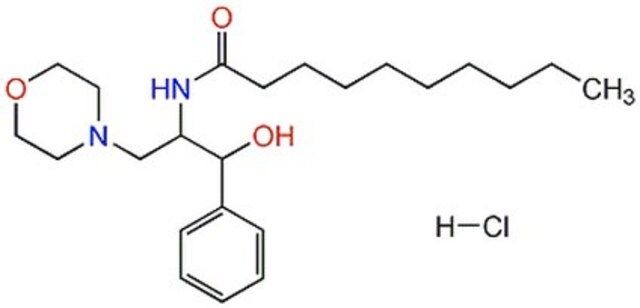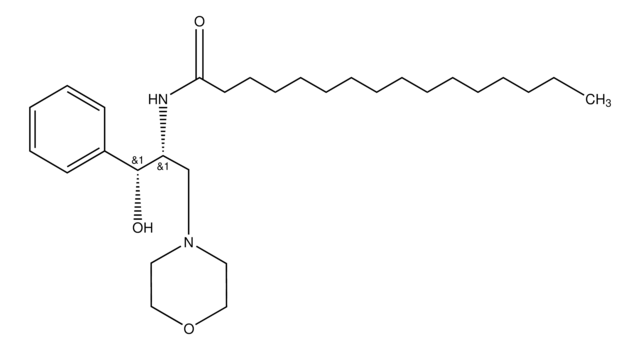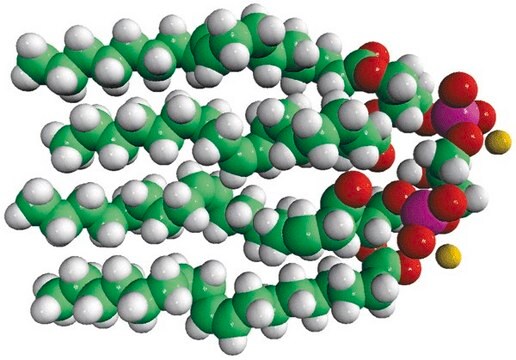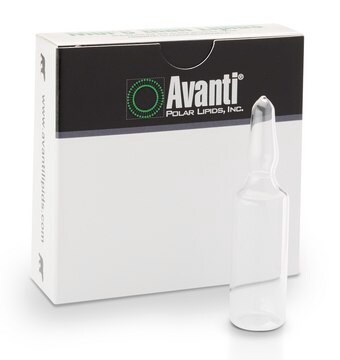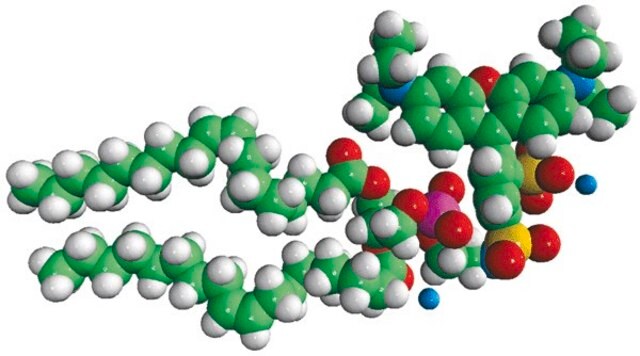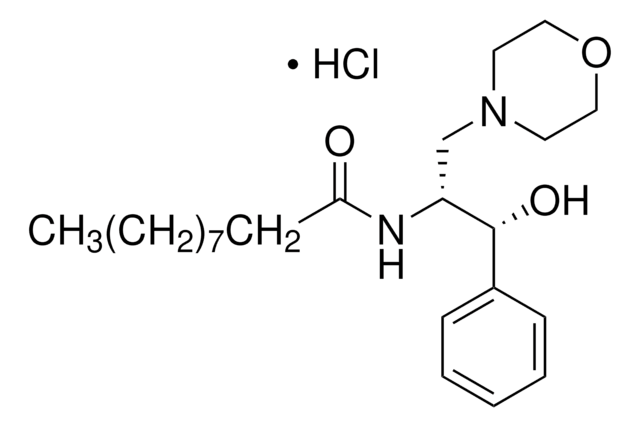870792P
Avanti
D-threo-PPMP
Avanti Research™ - A Croda Brand 870792P, powder
Synonyme(s) :
1R,2R-(+)-1-phenyl-2-palmitoylamino-3-N-morpholine-1-propanol
About This Item
Produits recommandés
Forme
powder
Conditionnement
pkg of 1 × 5 mg (870792P-5mg)
Fabricant/nom de marque
Avanti Research™ - A Croda Brand 870792P
Type de lipide
bioactive lipids
sphingolipids
Conditions d'expédition
dry ice
Température de stockage
−20°C
Chaîne SMILES
O[C@H](C1=CC=CC=C1)[C@H](NC(CCCCCCCCCCCCCCC)=O)CN2CCOCC2
Clé InChI
OFBANDBMHLEMFA-XRKRLSELSA-N
Catégories apparentées
Application
Actions biochimiques/physiologiques
Conditionnement
Informations légales
Code de la classe de stockage
11 - Combustible Solids
Classe de danger pour l'eau (WGK)
WGK 3
Faites votre choix parmi les versions les plus récentes :
Certificats d'analyse (COA)
It looks like we've run into a problem, but you can still download Certificates of Analysis from our Documents section.
Si vous avez besoin d'assistance, veuillez contacter Service Clients
Déjà en possession de ce produit ?
Retrouvez la documentation relative aux produits que vous avez récemment achetés dans la Bibliothèque de documents.
Notre équipe de scientifiques dispose d'une expérience dans tous les secteurs de la recherche, notamment en sciences de la vie, science des matériaux, synthèse chimique, chromatographie, analyse et dans de nombreux autres domaines..
Contacter notre Service technique
